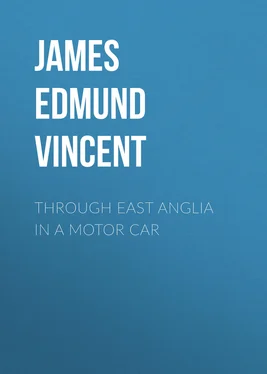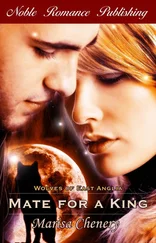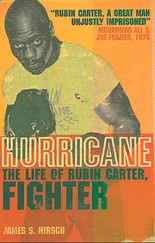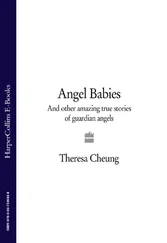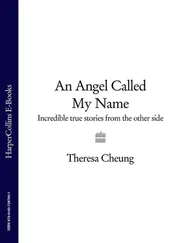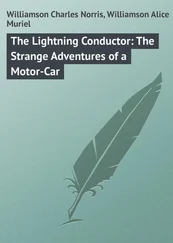James Vincent - Through East Anglia in a Motor Car
Здесь есть возможность читать онлайн «James Vincent - Through East Anglia in a Motor Car» — ознакомительный отрывок электронной книги совершенно бесплатно, а после прочтения отрывка купить полную версию. В некоторых случаях можно слушать аудио, скачать через торрент в формате fb2 и присутствует краткое содержание. Жанр: Путешествия и география, foreign_antique, foreign_prose, на английском языке. Описание произведения, (предисловие) а так же отзывы посетителей доступны на портале библиотеки ЛибКат.
- Название:Through East Anglia in a Motor Car
- Автор:
- Жанр:
- Год:неизвестен
- ISBN:нет данных
- Рейтинг книги:3 / 5. Голосов: 1
-
Избранное:Добавить в избранное
- Отзывы:
-
Ваша оценка:
- 60
- 1
- 2
- 3
- 4
- 5
Through East Anglia in a Motor Car: краткое содержание, описание и аннотация
Предлагаем к чтению аннотацию, описание, краткое содержание или предисловие (зависит от того, что написал сам автор книги «Through East Anglia in a Motor Car»). Если вы не нашли необходимую информацию о книге — напишите в комментариях, мы постараемся отыскать её.
Through East Anglia in a Motor Car — читать онлайн ознакомительный отрывок
Ниже представлен текст книги, разбитый по страницам. Система сохранения места последней прочитанной страницы, позволяет с удобством читать онлайн бесплатно книгу «Through East Anglia in a Motor Car», без необходимости каждый раз заново искать на чём Вы остановились. Поставьте закладку, и сможете в любой момент перейти на страницу, на которой закончили чтение.
Интервал:
Закладка:
On the very same day the party of explorers—I find they were not the Norwich Society, but the Yarmouth branch of the Norfolk Archæological Society on a pilgrimage—had visited the old Foundry Bridge, heard the story of the loss of a Yarmouth packet hard by in 1817, learned that a neighbouring yard, once known as Spring Gardens, was a resort of fashion in the eighteenth century, seen the remains of the Austin Friars' Watergate, visited the Devil's Tower, heard the history of the city walls and St. Peter's, Southgate. Dr. Bensly had read a paper at Robert de Salle's house aforesaid. Then St. Etheldreda's Church was visited, the plate was examined, and Dr. Bensly read another paper in the crypt of the House of Isaac the Jew, a Norman domestic cellar, clearly to be traced from the days of William Rufus, to a house subsequently occupied by Sir John Paston and Lord Chief Justice Coke. Next at St. Peter's, Permountergate, attention was called to all manner of details—personal, historical, and architectural; St. Andrew's and Blackfriar's halls were visited and explained; a paper was read on sundry discoveries made in excavating under the Guildhall; King Edward VI's Middle School (the one in the ancient convent) was seen; a paper was read on St. Andrew's Church; and, after dinner at the "Maid's Head," the vicar of St. Peter's, Permountergate, read a paper on the parish records. Just a few of the entries it is impossible to resist, for they are of imperishable interest.
"1798. October 19th. Form of Prayer on the victory obtained by Admiral Sir Horatio Nelson over the French fleet off the Nile, 1st August /6."
"Nov. 12th. Form of prayer for general thanksgiving on 29 November 1/".
"1805. December 5th. Paid for a form of Prayer and Proclamation on account of the late glorious victory over the combined fleets of France and Spain by Lord Viscount Nelson off Cape Trafalgar on 21st October, 1/".
No bells were rung in Norfolk that day, for the calamity of Nelson's heroic death saddened the heart of every man in his native county. But they were rung at St. Peter's, Permountergate, merrily enough, no doubt, in 1814, when there was the entry: "April 12. Putting flag upon the steeple on Buonaparte's overthrow; beer ditto 7/6."
Does this multiplicity of topics take away the breath, as is intended? Not without set purpose has this very full day in the life of an archæological association been set forth with some little of particularity. It is an illustration, deliberately chosen, of the truth that a learned party, or a party desirous of becoming learned, can spend a day comfortably in a single quarter of Norwich under expert guidance and without wasting any time, and yet leave a vast number of the most interesting places and remains altogether unvisited. We have no mention here of the city walls, of Tombland, the meaning of which is still in doubt, of the castle, of the Guildhall and its treasures, of the Strangers' Hall and a score of matters besides. This is not criticism, but a preliminary to an excuse in the nature of confession and avoidance. The Yarmouth archæologists were wise in their generation in contenting themselves with a single section of the city on a single day. They had come, perhaps, before; they could come, no doubt, again. What they saw and heard in a single day is an explanation, combined with cursory mention of some of the things not seen, at once of the extraordinary fascination Norwich must exercise over a man or woman of intelligence, of the immense variety of its attractions, and of the sheer absurdity of attempting to deal with them in a part of a book with any completeness. It is better, surely, to give something of detail, if not a tenth of what is due, to a part, than to attempt the vain task of stretching the complex whole in outline. To him or her who has time I would say, "Spend a great deal of it in Norwich, and you will find no hour hang heavily."
Also it is as well to know a little of Norwich as an historical city and of its associations, of which indeed the latter are so much the more interesting that the history may almost be cast on one side. First of all the idea that Norwich was Venta Icenorum may be dismissed, with Mr. Haverfield's authority, as untenable for lack of evidence. No considerable Roman remains of clear authenticity have been found to warrant the theory. The castle is a complete puzzle. The city was ravaged by the Danes, of course, under Sweyn in 1003, and it became a diocesan centre in 1094, and has remained such ever since. It was walled, as has been stated, by the citizens; it flourished in the wool trade early. "Worsted" owes its name to an adjacent village, and Sir John Paston wrote: "I would have my doublet all worsted for worship of Norfolk." It suffered grievously in the time of the Black Death. It had its share, as we have seen, of trouble from Wat Tyler's rebellion and from Kett's rebellion in the sixteenth century, Mousehold Heath being the place of encampment on both occasions. Elizabeth, also visited it in state in 1578, and it contributed its quota towards the repulse of the Armada. From the troubles of the Civil War it escaped almost scot free, mainly because East Anglia, the home of the Eastern Counties Association, was exclusively Parliamentarian, except in the case of Lynn, whereof more later. After that it is true to write of Norwich, as Mr. Walter Rye has written of Norfolk, that the history of the last three centuries is really one of elections and of trade, neither of them very alluring from our present point of view.
All these things, however, are but history in the primitive sense. There is far more pleasure, and perhaps as much profit, in remembering that the editor of the Paston Letters , a mine of information and of interest, was Sir John Fenn, a man of Norwich; that Dean Hook, Mrs. Opie, Hooker the botanist, and Harriet Martineau were born in Norwich. These names, except perhaps that of Fenn, do not stir the imagination much in these days. We are spared from study of Miss Martineau's Political Economy , or of her history; and Sir John Fenn was really, as his comments in the Paston Letters and his omissions from them prove, a dull dog; but what man or woman of literary taste can see, as I did the first day I was in Norwich, the name Rackham on a solicitor's brass plate without remembering that the wayward genius, George Borrow, was clerk to Messrs. Simpson and Rackham, solicitors, or perhaps they were attorneys then, of Norwich, or will omit a pilgrimage to the house, still unchanged, in which he lived in Willow Lane? Then, chiefest jewel of all in the crown of Norwich is the Norwich school of painting that rose in her midst, whereof "old Crome"—his portrait is in the Guildhall—was the father and the founder. His pictures you may study in the National Gallery, but only in Norwich, where he was born and apprenticed to a coach and sign-painter, can you realize his gradual progress, see him in imagination producing signs for the "Lamb" and the "Maid's Head," teaching the Gurney children at Earlham, having George Vincent and James Stark as apprentices, founding, with Ladbroke, R. Dixon, C. Hodgson, and John Thirtle, the first provincial art society, holding in 1805, and subsequent years, considerable exhibitions, joined in 1807 by John Tell Cotman. Only here can one realize the depth and justice of the pride taken by Norwich and Norwich men in their most honourable school of painting, and the eagerness with which the merchant princes of Norwich collect the examples of the school. But there are some in the Guildhall, too, as is but right.
CHAPTER III
WINTER. NORWICH TO LONDON BY ROMAN ROAD
Crooked streets of Norwich—An appropriate epitaph—To the county surveyor of Norfolk many thanks—The London Road (Roman)—Roman roads in East Anglia—Mr. Haverfield, the greatest authority on—Some history necessary to understand paucity of Roman remains in East Anglia—The country of the Iceni—Rebellion, brief triumph, and defeat of Iceni under Boadicea—The Iceni wiped out—Their territory minor part of an unimportant province—No military stations—Frontier far to the north—Caistor-by-Norwich not a Roman fortress—Roman roads of East Anglia enumerated— En route —Tempting declivities and annoying cross-roads—Long Stratton—The first round flint tower—Explanation—Scole and county boundary—The "White Hart"—Worse roads in Suffolk—A church with good parvise—Difficulty of identifying villages—Ipswich to Colchester and London—Towns and scenery of route postponed—Reasons—Puzzling darkness—Familiar villages not recognized—Futile demand for tea—Romford discovered—Lights to left front—Had we lost our way?—"Stratford Empire" a sign of hope—Ichthyophagous Whitechapel—Skill in traffic—Journey ended—Observations on winter motoring—On general character of East Anglian scenery.
Читать дальшеИнтервал:
Закладка:
Похожие книги на «Through East Anglia in a Motor Car»
Представляем Вашему вниманию похожие книги на «Through East Anglia in a Motor Car» списком для выбора. Мы отобрали схожую по названию и смыслу литературу в надежде предоставить читателям больше вариантов отыскать новые, интересные, ещё непрочитанные произведения.
Обсуждение, отзывы о книге «Through East Anglia in a Motor Car» и просто собственные мнения читателей. Оставьте ваши комментарии, напишите, что Вы думаете о произведении, его смысле или главных героях. Укажите что конкретно понравилось, а что нет, и почему Вы так считаете.
